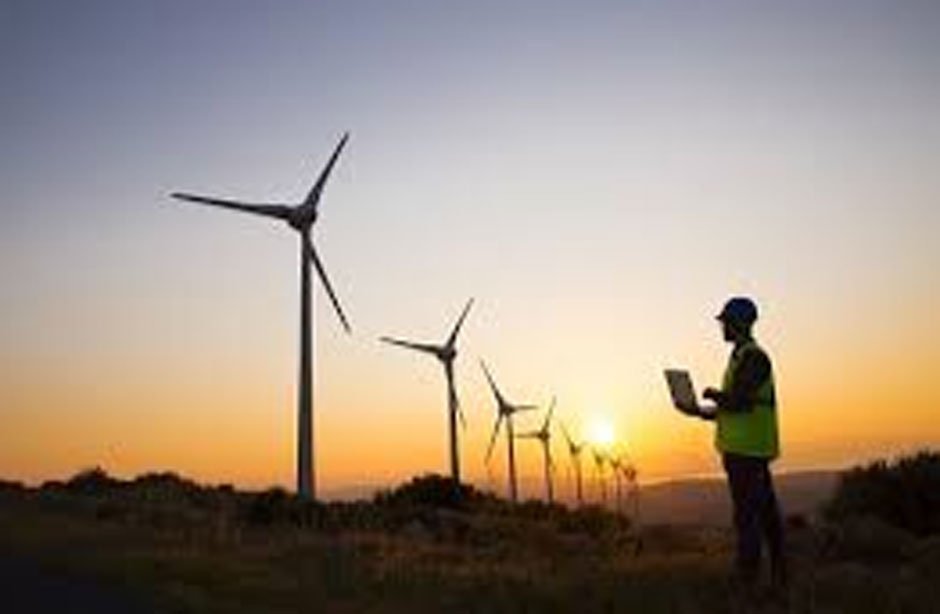Prioritizing Energy Safety in Today’s World for a Safer Future

In the contemporary world, energy is the order of the day. We can hardly imagine our homes without the lights or the factories that produce our technology without the constant stream of power. Those systems that provide this energy are however always threatened. As an example, think of a massive grid outage because of an unprecedented heatwave or a sudden and highly dramatic increase in the price of the gas because of a conflict in another country. These accidents have made it very clear that we should not consider our energy supply to be safe. Energy Safety is the most crucial step we can nowadays take to ensure a stable, healthy, and prosperous future for all of us.
The term energy safety has long been used to refer to the prevention of accidents in the industry. But the world is different. The real-life energy safety today is an enormous concept. It consists of three major, interdependent pillars, including Physical Security (fires, explosions, and attacks need to be prevented), Energy Security (the supply must be reliable and affordable to all), and Environmental Safety (the move towards clean sources and the elimination of climate change). All these three areas now should be addressed simultaneously. It is not an option but a necessity of this comprehensive approach. This article will demonstrate to you the dangers that we are about to experience, how the transition to clean energy is transforming safety, and how simple actions that we can implement will make our entire energy system future-proof.
The Multi-Front War on Energy Vulnerability
Our energy infrastructure is vulnerable to threats on many fronts, and the infrastructure is unexpectedly weak. The first critical issue is political instability. Since most of the nations continue to depend on the importation of fossil fuels such as oil and gas to certain areas which are usually volatile, any international conflict or political wrangles can immediately destroy supply channels. As an illustration, the threat of a nation to cut the gas supply causes energy prices to skyrocket in all the countries, family budgets are hit, and the economy is in chaos. Additionally, the movement towards clean energy also has supply risks. Solar panels, wind turbines, and batteries contain components that need the important minerals, including lithium and cobalt. These are minerals which are usually produced by a limited number of countries. Consequently, ensuring supply chains of such minerals is rapidly turning into one of the key national security and energy security issues.
The other threat that is developing quickly is the one of the digital world: cyberattacks. The current power grid is now a smart grid that is operated by computers and software. This digitalization renders the grid more effective, yet it provides enormous targets to the hackers. An advanced attacker might even be able to close down power plants, affect transmission systems as well as physically damage the equipment by overloading it. The safety of these critical, computerized systems is now of high-priority. Consider the chaos and the safety risks should there be a power outage in an entire city; and this is the very plausible risk of cyber vulnerability.
Furthermore, the very environment we live in is attacking our energy infrastructure. Climate change is causing more frequent and severe weather events. Heatwaves can melt power cables and reduce the efficiency of power plants. Floods can damage substations. Intense storms and wildfires destroy transmission lines. These climate-driven disasters expose a deep lack of resilience in our current system. Therefore, any effective strategy for energy safety must include making all of our energy infrastructure stronger and more resistant to extreme weather. To save money, many people want to compare energy plans from different suppliers. However, remember that the reliability and safety of the infrastructure delivering that power often depends on large, national investments that go far beyond your monthly bill.
Integrating Safety into the Clean Energy Transition
The move towards clean energy and the abandonment of fossil energizing is vital to the safety of the environment, but it also presents quite specific technical safety concerns, which we need to comprehend and address with caution.
Safety Across Renewables
Although they are believed to be essentially safer compared to the operations of fossil fuels, solar and wind power also have threats. In the case of Solar Photovoltaic (PV) systems fire risk is the key issue of concern particularly in residential and commercial rooftop systems when the wiring is not of standard and the standards are not adhered to. This has to have special and quality installation and maintenance procedures. In the case of Wind Farms which are either offshore or onshore, much attention is given to occupational safety. It is unsafe to work hundreds of feet in the air to service huge turbines. To ensure that workers are safe, there is a need to have proper safety harnesses, rigorous training and stringent maintenance schedules.
The Storage Revolution’s Challenge
Energy Storage is probably the most important new safety concern, specifically, large-scale systems based on lithium-ion batteries. Such systems are vital in ensuring that wind and solar power are available during the periods when the sun is not shining or when there is no wind. Nevertheless, the massive battery banks are prone to thermal runaway. It is a very risky domino effect where a battery cell starts overheating making its neighbours overheat too resulting in intense fires that are hard to put out. This danger is not limited to utility scale storage plants but also to the batteries on our daily machines and most importantly in Electric Vehicles (EVs). Designing, production and installation of batteries to the highest standards possible is the most important thing to the safety of people.
The Return of Nuclear Energy
Nuclear energy is once again under consideration by many countries as the world finds a way to get dependable carbon-free power. Newer designs, including Small Modular Reactors (SMRs), will be safer generation and smaller. Nonetheless, the credibility of the population and international security measures are crucial. All the nuclear facilities whether new or old should be made to be under the strictest safety and security standards by the international community in order to avoid accidents and guard against any efforts of terrorism or abuse of materials.
Health and Environmental Gains
Ultimately, the transition to clean energy is the biggest safety initiative of all. Air pollution from burning fossil fuels is a major contributor to respiratory diseases, heart conditions, and millions of premature deaths worldwide. By switching to sources like wind and solar, we instantly improve public health. This dramatic reduction in harmful emissions is an economic benefit, too, as it cuts down on massive healthcare costs. Many people need a new power connection when they move homes, and increasingly, this connection should link to a greener, cleaner, and safer national grid to maximize these health benefits for everyone.
Strategies for Future-Proofing the Global Energy System
The solutions that will transform the energy system into really safe and resilient will need clever investments in technology and policy. It is necessary to go past damage repair after it happens, and avoid it altogether
Technological Safeguards
The extensive implementation of the Microgrids is one of the most efficient strategies. They are mini systems of energy and can serve a smaller locality – a university campus, a hospital, a neighbourhood – by going off line when there is a major failure in the main power grid. This local resilience makes sure that during massive blackouts, this important services will be able to continue running. Moreover, it is important to use Artificial Intelligence (AI) and more sophisticated sensors. Such systems have the ability to real-time observe the grid and to identify minor faults or cyber intrusions prior to failure and to reroute power automatically to preserve stability.
Policy and Regulatory Reforms
The safety challenge is not solvable with technology alone and powerful government policies are essential. Governments should impose more uncompromising levels of cyber-resilience in the energy sector, including its generation and smart meters at homes. In addition, there should be proactive policies to encourage the investment in resilience instead of simply choosing the lowest short-term cost. As an example, power lines should be buried underground in places that are likely to have wildfires or extreme storms as a precaution, though this is more expensive in the short term but much safer in the long. There is also the need to have international collaboration to share on the best practices to be used in safety norms and establishing secure supply chains of critical minerals.
Investment in Human Capital
The emerging new economy demands a new highly trained workforce. The expertise required to operate a solar farm or to maintain an EV charging station or operate a hydrogen pipeline are entirely disparate with the expertise required to operate a coal plant. It needs to invest in retraining and education of the workforce. This is to guarantee that the energy workers are not merely well versed with the new technologies but highly versed with the new safety measures particularly in new sectors such as hydrogen technology which must require extra attention of storage and transportation because of its flammability.
Promoting Circularity
Lastly, the long-term safety of our planet requires the end-of-life of clean energy technologies. With millions of solar panels and EV batteries eventually retiring, we must have strong, controlled mechanisms of their recycling and decent disposal. In absence of this circular economy model, there is a probability of solving one environmental issue (fossil fuels) and causing yet another (toxic e-waste), which would grossly jeopardize environmental safety in the future.
Conclusion
The need to prioritise the safety of energy in the contemporary complicated world requires a wider and expanded dedication than ever before. It asks us to deal with the short-term risks of cyberattacks and climate disasters at the same time, deal with the new technical safety challenges of battery storage and renewables, and address the underlying concerns of supply security. It is an intergenerational commitment to investments of physical security, energy security and environmental protection. When we take decisive action today, employ intelligent technology, and make prudent policies we will not only be protecting our existing systems, but also will be setting the scene to have an energy future that will be truly stable, healthy and safe to all.
Last modified:

